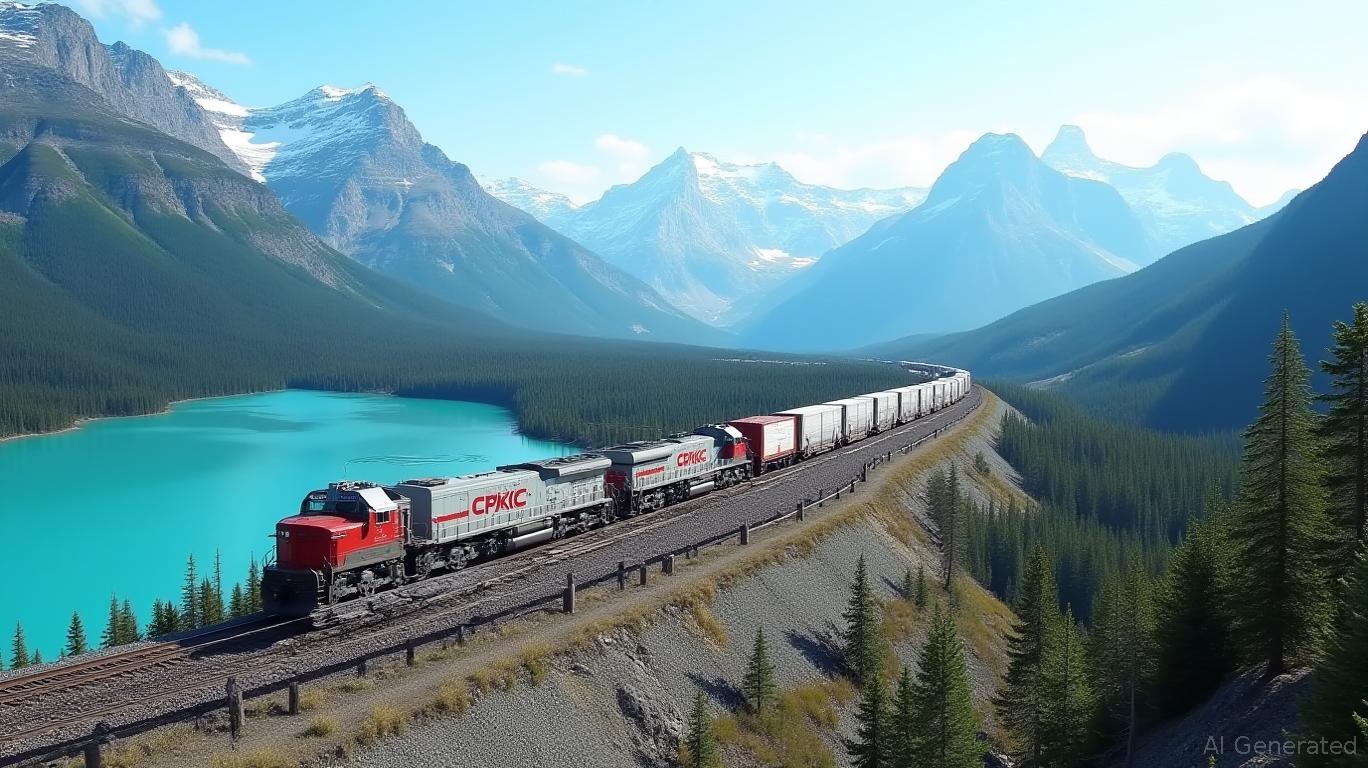CPKC's Labor Stability Through 2027: A Blueprint for Predictable Growth in a Volatile Rail Sector
The North American rail sector has long been a battleground of volatility—labor disputes, regulatory shifts, and economic swings often disrupt even the best-laid plans. Yet
(CPKC) has quietly engineered a strategic moat to insulate itself from these risks. By securing binding labor agreements through 2027, CPKC has eliminated a major source of uncertainty, positioning itself as a rare “safe haven” for investors seeking stable, long-term returns. Let's dissect why this matters now.
The Ironclad Labor Advantage
At the heart of CPKC's stability is its newly finalized collective bargaining agreements with critical union divisions, including the Teamsters Canada Rail Conference (TCRC) Train and Engine (T&E) and Rail Canada Traffic Controllers (RCTC). These agreements, effective until December 31, 2027, feature annual 3% wage increases for approximately 3,280 employees—no strikes, no lockouts, and no ratification required. The terms were finalized through binding arbitration, ensuring compliance without the risk of stoppages that have plagued peers like Canadian National (CN) in recent years.
Why is this a game-changer? Labor disruptions cost CPKC's peers billions in lost revenue and eroded investor confidence. By locking in these terms, CPKC has removed the variable of unpredictable labor costs, allowing it to project cash flows with precision. Consider this: in Q1 2025, CPKC reported an 8% revenue jump to $3.8 billion and a 150-basis-point improvement in its operating ratio to 62.5%—metrics that would be far harder to achieve if labor disputes were still looming.
A Post-Merger Growth Tailwind
The CP-KCS merger, finalized in 2023, created the continent's second-largest rail network. This consolidation has turbocharged CPKC's ability to capture cross-border freight demand, particularly in high-margin sectors like energy, agriculture, and automotive. With labor costs now stabilized, CPKC can allocate capital strategically to optimize routes, upgrade infrastructure, and capitalize on booming commodities markets.
Take coal exports, for example: CPKC's Q1 2025 coal shipments surged 14% year-over-year, driven by Asian demand. With no labor interruptions to slow these trains, the company can scale operations without hesitation. Similarly, automotive shipments—critical to the EV boom—grew 11%, reflecting CPKC's role as a trusted partner for manufacturers.
Why Investors Should Act Now
The rail sector's volatility is undeniable. From fuel price swings to geopolitical tensions, few companies offer the operational predictability CPKC now boasts. Here's why this is a buy signal:
- Cost Certainty: The 3% annual wage hikes are fixed, shielding CPKC from inflation-driven labor spikes. Compare this to competitors facing union demands for double-digit increases.
- Capital Efficiency: With labor risks mitigated, CPKC can reinvest cash into high-return projects, such as track upgrades and digital freight management systems.
- Scale Meets Stability: The CP-KCS network covers 23,000 route-miles, but without the headaches of unresolved labor disputes, this scale becomes an asset rather than a liability.
The Bottom Line: A Rare Safe Harbor in a Stormy Sector
In a rail sector where labor disruptions and macroeconomic headwinds threaten profits, CPKC's locked-in agreements through 2027 are a strategic masterstroke. By eliminating one of its largest operational risks, the company has transformed itself into a growth engine with minimal downside exposure.
For investors, this is a buy-and-hold opportunity. With North American rail demand forecast to grow at 4% annually through 2030, CPKC's stability ensures it can capitalize on every uptick. Don't wait for others to recognize this: secure your stake now, before the market catches up to CPKC's hidden value.
Invest with conviction where others see chaos.

Comments
No comments yet